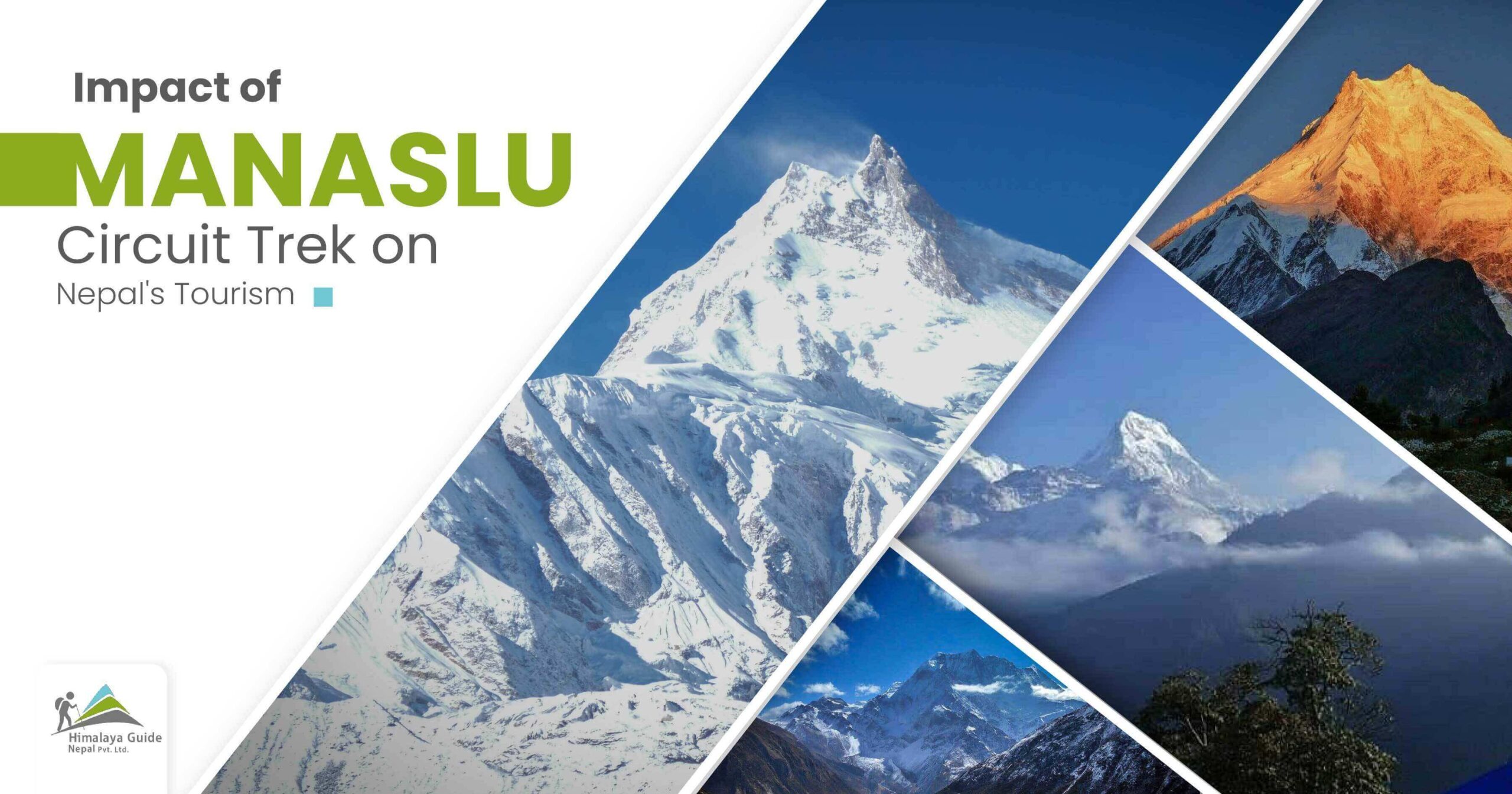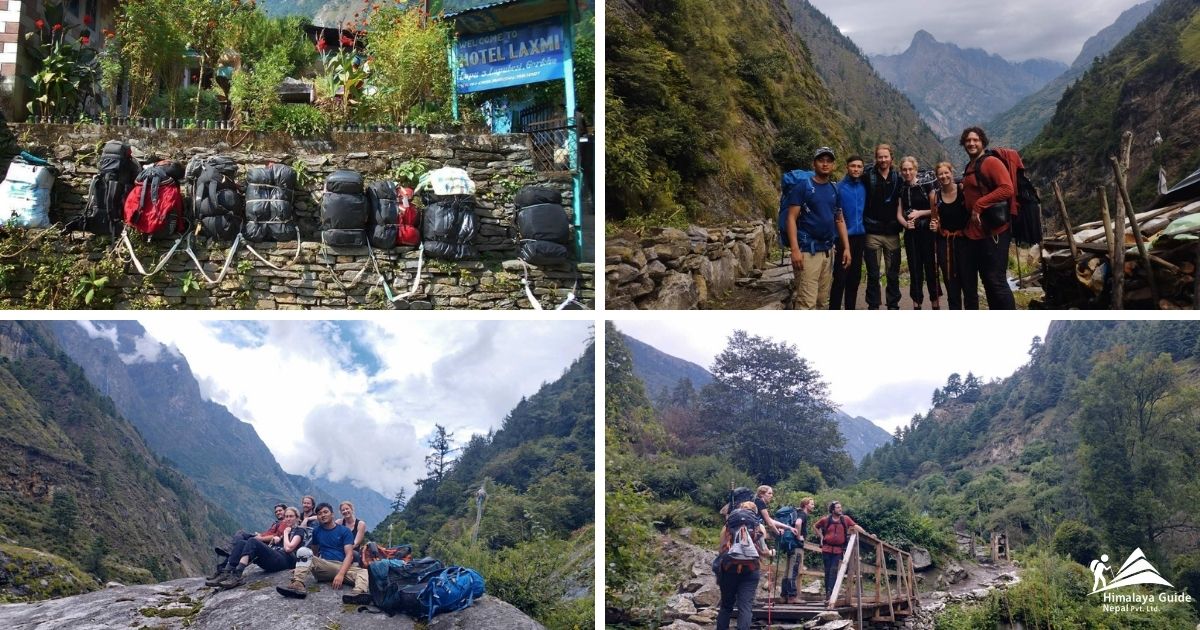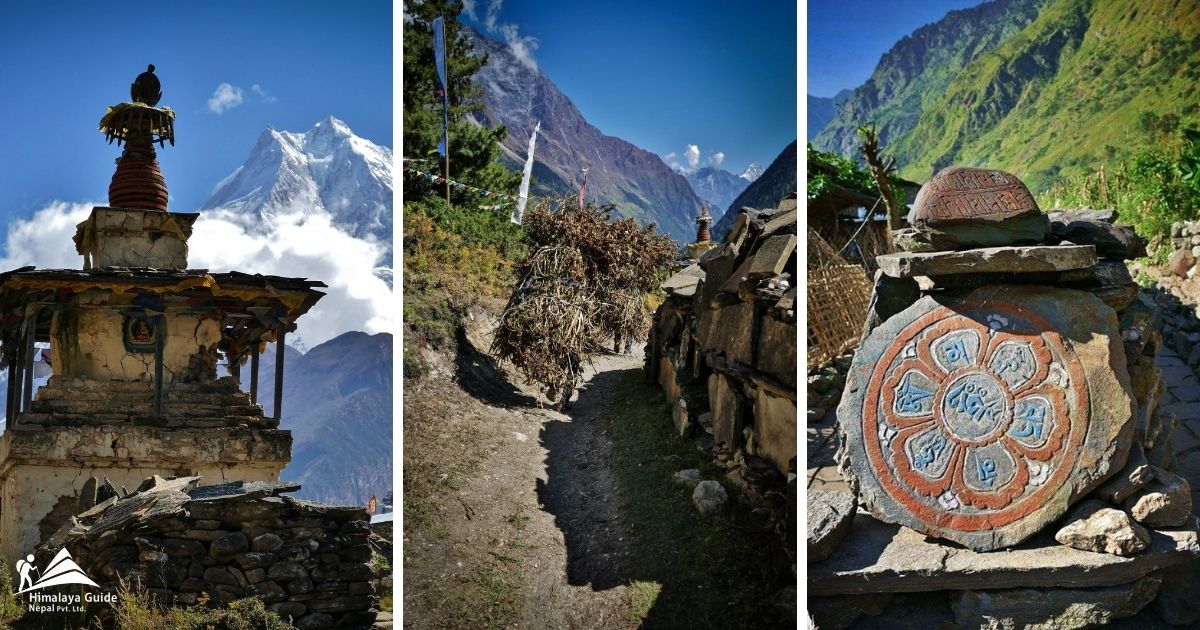Impact of Manaslu Circuit Trek on Nepal’s Tourism

24 Apr 2023 Chandra Gurung
Nepal’s tourism has attracted visitors worldwide because of its sky-high mountains and stunning landscapes. Visitors travel to this beautiful country to experience adventure, climb tall peaks, and explore breathtaking landscapes. Nepal’s Manaslu Circuit Trek is a true jewel in the crown of spectacular treks.
It’s a long and challenging journey that takes you through the rugged, isolated terrain, steep and high mountain passes, and breathtaking scenery. All under the shadow of Mount Manaslu, the eighth-highest mountain in the world. Embarking on the Manaslu Circuit Trek is a once-in-a-lifetime opportunity to explore one of the most awe-inspiring places in the world: the majestic Himalayan Mountains.
Overview
The Manaslu Circuit Trek is an exciting experience for anyone looking for adventure, with the possibility of climbing peaks and challenging your boundaries. As you progress further into this trek, you will find yourself in the shadow of Mount Manaslu. It is impossible to describe how breathtaking the Nepalese Mountains are, with their breathtaking vistas.
The trek, with its hypnotic beauty and challenging terrain, is a once-in-a-lifetime experience that promises to push your limits and reward you with everlasting memories. It is a journey that promises to take you on an unforgettable adventure, offering a glimpse into a world of wonder that few have experienced.
The Importance of the Manaslu Circuit Trek for Nepal’s Tourism Sector
In the context of Nepal’s tourism industry, the Manaslu Circuit Trek is a significant contribution to the country’s economy. Tourism is an important industry in Nepal, accounting for over 10% of the country’s GDP and employing over a million people.

According to records, around 2,000 people visit the Manaslu Circuit each year. The nation is well-known for hiking and climbing, and the Manaslu Trek is just one of several renowned treks that draw thousands of tourists annually.
The Tourism Industry Benefits From Manaslu Trek
Not only is the Manaslu Circuit Trek a well-liked location for trekkers and adventurers, but it also offers a chance for the surrounding villages and the government to earn from the tourism industry.
Local People
The trek provides plenty of chances for local people to earn a living through tourism-related activities such as:
Running Lodges:
Tourists require lodging while on the trail, and local people have established lodges and teahouses that provide reasonable lodging to trekkers. Locals run these lodges and provide employment possibilities for the people in the area.
Running Restaurants:
The walk can be challenging, and hikers must refuel along the route. Local communities have established restaurants and food stalls to provide trekkers with traditional Nepalese cuisine, creating cash for the community.
Running stores:
Trekkers require trekking equipment, gear, and supplies. Local towns have established stores that sell trekking equipment and supplies, generating income for the residents.
Offering Guide and Porter Services:
Many trekkers rely on guides and porters to help them cross rugged terrain. Locals work as guides and porters, earning money and allowing cultural exchange.
Animal Husbandry & Agriculture:
The local communities work in agricultural and animal husbandry, supplying hikers with food and supplies and earning a living.
Government:
The Manaslu Circuit Trek also helps the government generate cash through licenses, taxes, and other fees. The government charges trekkers and mountaineers a permit fee, which adds to government revenue. In addition, the government levies a tourism tax, which goes toward developing the region’s tourism business and infrastructure.
Furthermore, the trek promotes cultural tourism by introducing trekkers to the unique traditions and lifestyles of the local communities. Visitors can experience a unique experience that they cannot forget in their lifetime.
Why Is Nepal’s Tourism Industry Struggling?

Even though the Manaslu Circuit Trek and Nepal’s tourism sector provide excellent opportunities and experiences, they encounter their share of difficulties. Tourism can be affected by several factors, including:
- Pandemic
- Competition from other nation
- Unstable government
- Natural disaster
- Economic conditions
- Security issues
- Environmental worsening
Pandemic:
Health problems like pandemics, breakouts, and epidemics can lead to travel restrictions and lower tourism demand. Unfortunately, the COVID-19 pandemic has substantially impacted the industry, with many businesses and workers struggling to keep their businesses running.
Travel restrictions and lockdowns have significantly reduced the number of tourists to the country, resulting in a drop in visitor numbers. It has also led to the closure of many businesses, economic losses, and financial difficulties for people who rely on tourism.
Competition From Other Nations:
Competition from other nations has increased the pressure on Nepal’s tourism industry to remain competitive and discover new ways to attract tourists. Competition offering similar attractions and experiences can also impact the tourist sector by diminishing demand for a specific place.
Furthermore, other nations in the region, like Bhutan and India, have emerged as competitors, providing tourists with similar trekking and mountaineering experiences. These variables can substantially impact the tourist industry, and locations must handle these concerns proactively to maintain the industry’s long-term survival and growth.
Unstable Government:
Political instability in a country might make it less appealing to tourists, as it can lead to safety concerns and travel restrictions. Different governments launch different rules and regulations, so following all these protocols is difficult. So unstable governments become one of the factors that affect the tourism industry in Nepal.
Natural Disaster:
Natural catastrophes, such as earthquakes, floods, and hurricanes, can considerably influence the tourism industry. By inflicting infrastructure damage, disrupting travel, and raising safety concerns. A natural disaster is a non-preventing factor that cannot be solved but can be prevented somehow.
Economic Conditions:
Economic conditions such as inflation, unemployment, and currency exchange rates can all impact the affordability and appeal of a tourism destination. The increased rate, different fees, and unstable pricing annoy tourists, and they may prefer to avoid revisiting Nepal.
Tourist attraction places often lack infrastructure development due to insufficient budgets. As a result, tourists are required to spend more time travelling to these locations.
Security Issues:
Security issues, such as terrorism, crime, and civil instability, might also deter tourists from visiting a certain location. Many tourists may feel unsafe visiting the same place for security reasons.
One of the main reasons why tourists feel unsafe travelling to tourist sites is its airport. Lukla Airport is considered one of the most dangerous airports in the world. Lukla Airport is the only airport to reach the Himalayan region.
Environmental Worsening:
Environmental worsening, such as pollution, deforestation, and climate change, can impact a destination’s natural attractiveness and discourage visitors.
In conclusion, even though Nepal’s tourism industry has encountered significant difficulties due to the COVID-19 pandemic and increased competition from neighbouring nations, there is still hope for the business to recover.
The future of Nepal’s tourist business appears bright, thanks to the government’s backing and emphasis on sustainable tourism practices. As well as the industry’s adaptability and strength.
Tourism in Nepal: How Does It Affect the Country?
As with any popular destination, there are challenges that Nepal’s tourism industry faces. But the Manaslu Circuit Trek remains a shining example of the country’s enduring appeal. Also tourism industry has significantly affected the county in different ways, some of which are as follows:

- Tourism has a tremendous impact on Nepal’s economy and growth.
- It has helped generate cash for the government while adding to the country’s general economic prosperity.
- Tourism has helped to raise Nepal’s international reputation and encourage cultural exchange by highlighting the country’s unique cultural history, traditions, and natural beauty.
- The tourism business in Nepal also confronts issues such as environmental degradation, traffic congestion, and cultural exploitation.
- Tourists can strain the country’s natural resources and infrastructure, causing environmental damage and traffic congestion.
- There is a risk of cultural exploitation because tourists may not always respect local customs and traditions, resulting in cultural heritage loss.
- The trek also benefits local communities through tourism-related business, contributing to the country’s overall economic prosperity.
Sustainable Tourism
Sustainable tourism is a fundamental approach to the tourism industry’s long-term development. Since it promotes the preservation of natural and cultural resources and the well-being of local populations. These practices can help Nepal’s tourism industry thrive and contribute to the general growth and development of the country.
The Nepalese government must implement policies promoting tourism and maintaining the country’s natural beauty and traditions. The Manaslu Circuit Trek highlights Nepal’s enduring attraction as a tourist destination. Offering a one-of-a-kind and spectacular trek through some of the country’s most stunning landscapes and cultural attractions.
By implementing sustainable tourism practices, Nepal can ensure that its tourist business thrives while safeguarding its natural and cultural resources for future generations. As part of its efforts to entice travellers, the sector has also explored new markets and promoted off-the-beaten-path destinations.
Conclusion
The Manaslu Circuit Trek contributes significantly to Nepal’s tourist industry and economy. Still, solving the industry’s issues and encouraging sustainable tourism practices are critical to ensure long-term viability. Finally, the Manaslu Trek is a popular destination for adventure seekers and trekkers and provides an opportunity for local people to benefit from tourism.
The journey gives numerous opportunities for residents to earn a living through tourism-related companies and cash for the government. However, with different obstacles, the Nepalese tourism industry has demonstrated durability and flexibility.
The government has prioritized environmentally friendly tourism practices that preserve natural and cultural resources to promote domestic tourism. As part of its efforts to entice travellers, the sector has also explored new markets and promoted off-the-beaten-path destinations.
